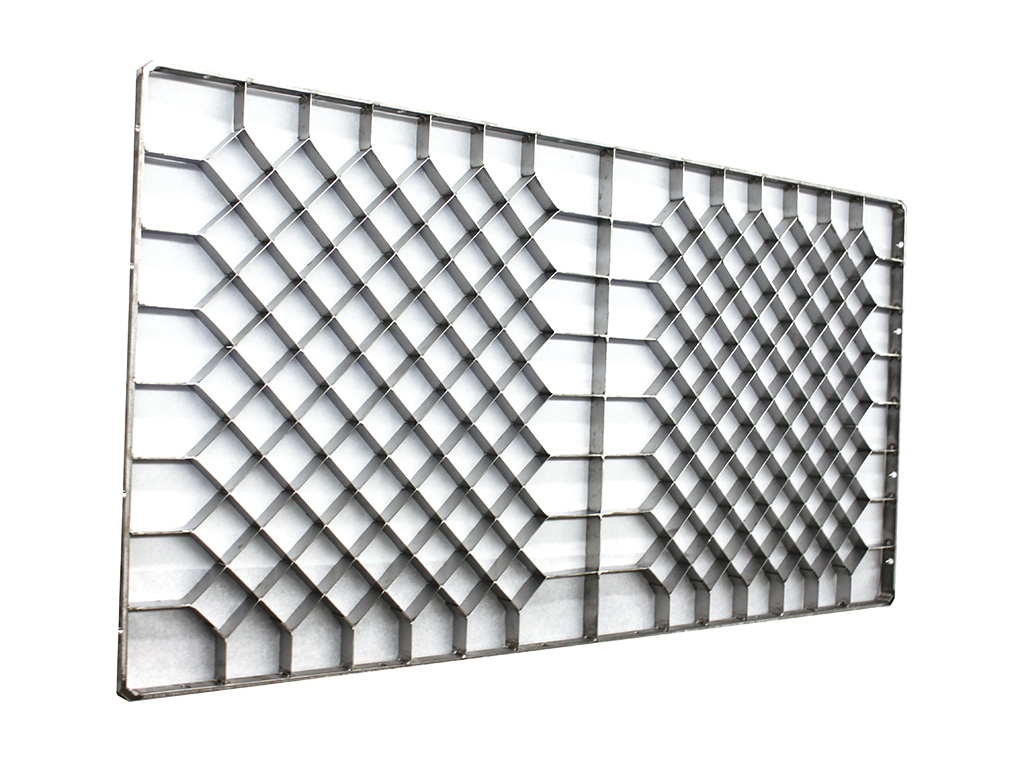Grid
Loading of mould cavities is one of the main operations of the pressing cycle, as the technical characteristics and dimensions of the tile depend on proper, constant and uniform distribution of the powder.
It must be carried out uniformly throughout the volume and kept constant throughout production in order to minimise differences in compacting, and thereby, the differences of shrinkage in a single piece, or between pieces that causes dimensional defects such as feeding and lunetts or production of series with different calibres. The dosing and input devices of the presses must therefore guarantee the proper loading of the mould cavities.
LINES
Lines are the most common type of grid, used in the ceramic sector for the majority of powder loading. Their function consists of loading powder as uniformly as possible in the mould cavities. These grids are very robust, thereby avoiding deformations and powder loss. The lines improve the load due to the position of the strips, preventing early wear of the matrix, and are easily repaired.
HONEYCOMB GRID
The honeycomb grid has an efficient, customised design for each format, thereby standardising the load and preventing potential waviness problems later seen in the pieces. Therefore, the honeycomb grid is ideal for polished and glossy products, as it allows work with solid punches, largely reducing squaring and planimetry defects.
GRID WITH V SCRAPERS
The grid with V scrapers is a new-generation grid, designed for maximum improvement of the load and preventing deformations and other deffects on the tile. At a technical level, the strips have been replaced with scrapers, in this way filling the mould cavity as many times as necessary, improving loading. The V scraper grids may be used for working with all formats pressed in the same press.



